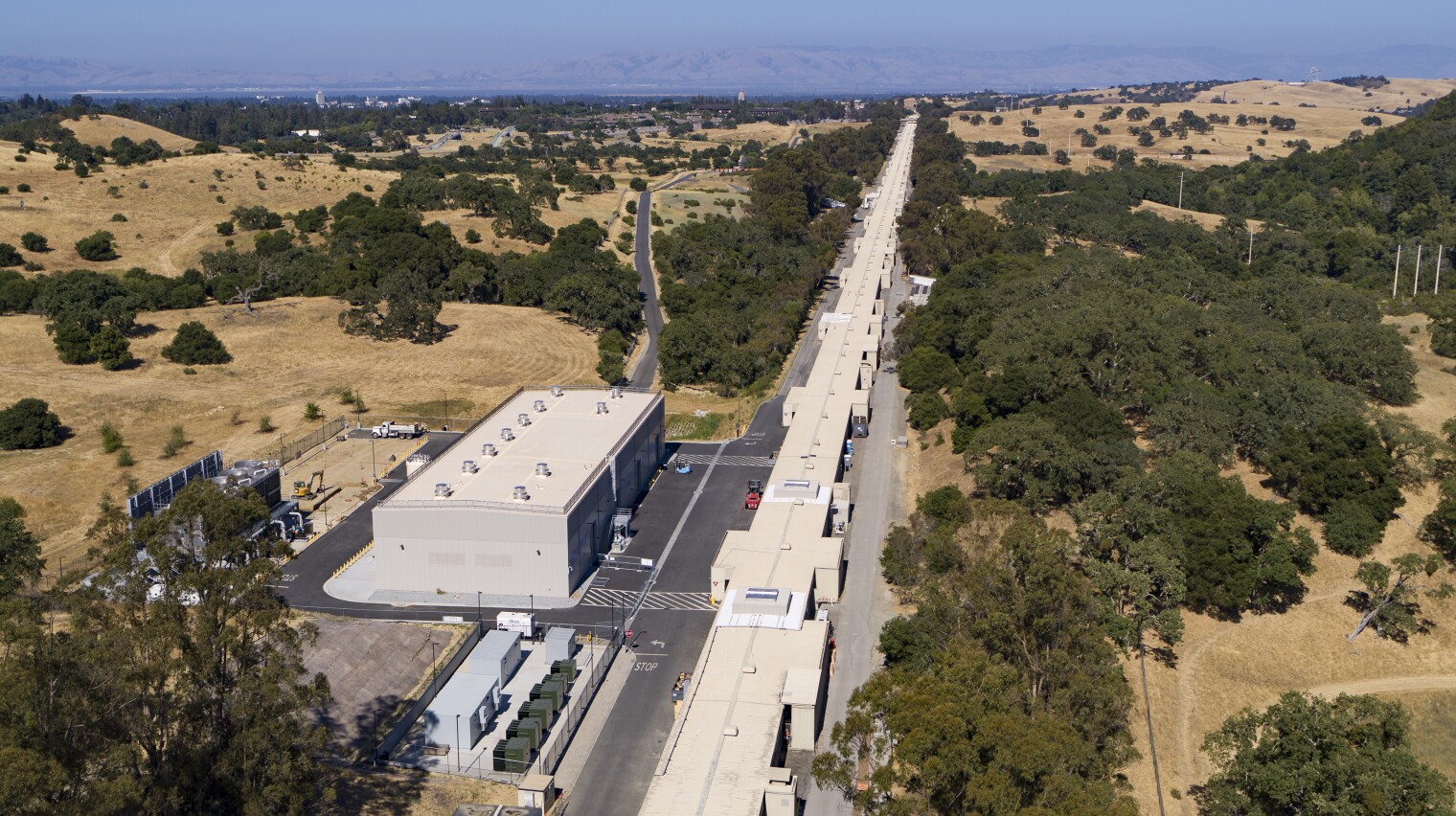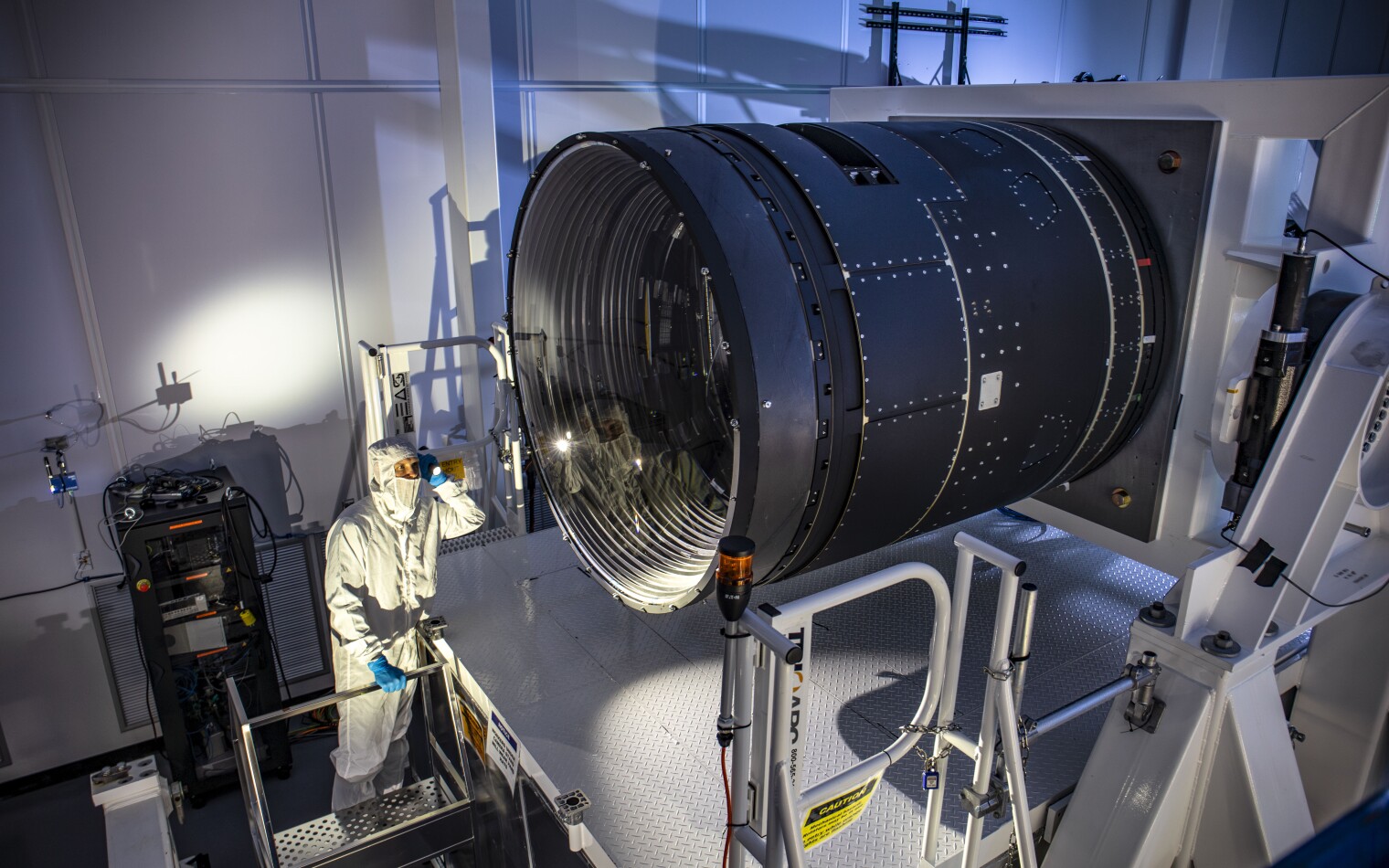| |
| FYI: Science Policy News from AIP |
| THIS WEEK |
|
|
|
|
|
|
| What’s Ahead |
 |
| An aerial photo of SLAC’s Linac Coherent Light Source X-ray free-electron laser. (SLAC National Accelerator Laboratory) |
Long-range Facilities to be Focus of DOE Advisory Committee Meetings
Two advisory committees for the Department of Energy’s Office of Science will meet this week to discuss long-term priorities for facility construction projects. The subject is on the agenda of the Basic Energy Science Advisory Committee, meeting Tuesday and Wednesday, and the Biological and Environmental Research Advisory Committee, meeting Thursday and Friday. The office instructed all of its advisory committees to report back by May with their recommendations for new facilities projects with “the potential to contribute to world-leading science in the next decade.”
BESAC will present its report responding to the charge. To stimulate its thinking, DOE provided the committee a preliminary list of eight projects. Four of those projects are in the pre-conceptual stage and the other four have already begun to receive funding: the Linac Coherent Light Source II High Energy Upgrade, Second Target Station upgrade for the Spallation Neutron Source, National Synchrotron Light Source-II Experimental Tools, and High Flux Isotope Reactor Pressure Vessel Replacement.
The BERAC agenda says it will discuss progress on the prioritization study but not necessarily release a final report. The preliminary list DOE provided to the committee includes nine projects, but most are in the pre-conceptual stage and so have few cost specifics. The committee will also discuss progress on two other directives from DOE – one to consider reviving a study of low-dose radiation and the other to provide a report on the state of data management within the BER portfolio.
AIP Foundation to Host Discussion on Physics and AI
The AIP Foundation will host a fireside chat on “Physics, AI, and the Future of Scientific Discovery” at 6:30 pm on Thursday with panelists from industry, academia, and government, including Walter Copan, former undersecretary of commerce for standards and technology; Jesse Thaler, physics professor at MIT and director of the National Science Foundation Institute for AI and Fundamental Interactions; Valerie Browning, vice president for research and technology at Lockheed Martin; and Evgeni Gousev, senior research director at Qualcomm. The event will be moderated by former NSF Director France Córdova and livestreamed on YouTube.
UN Hosts Ocean Decade Conference
UNESCO will hold a series of events this week in Barcelona, Spain, as part of the UN’s 2021-2030 ocean sustainability effort, Ocean Decade. Discussions will focus on short-term scientific priorities over the next three to five years in areas such as climate change, food security, sustainable management of biodiversity, sustainable ocean economy, pollution, and natural hazards. Steven Thur, director of research at NOAA, will give a keynote on Thursday focusing on scientific solutions for a sustainable ocean economy, and the National Science Foundation will host a satellite event on Tuesday.
National Science Policy Symposium Meets in California
The National Science Policy Network will host its National Science Policy Symposium at the University of California, Riverside, on April 12-14. Keynote speakers will include Frances Colón, former deputy science and technology adviser to the Secretary of State, and Réka Szemerkényi, former Hungarian ambassador to the U.S. The symposium will cover a range of evolving technologies from artificial intelligence to blockchain, clean energy, and more, considering how innovation is driving transformational change across society.
|
|
| In Case You Missed It |
 |
| A SLAC team member inspects the LSST camera in a clean room in January 2024. (Jacqueline Ramseyer Orrell/SLAC National Accelerator Laboratory) |
SLAC Completes Largest Digital Camera Ever Built for Astronomy
The Legacy Survey of Space and Time (LSST) Camera is set to be shipped to and installed in the Vera C. Rubin Observatory in Chile by June 26, 2024. There, it will help researchers create “the most informative map of the night sky ever assembled,” according to Rubin Observatory Director of Construction Željko Ivezić. The Rubin Observatory will use LSST to study dark matter, the expansion of the universe, gravitational lensing, and the Milky Way galaxy. The camera will be part of the Rubin Observatory’s mission to study weak gravitational lensing, which could ultimately lead to information about how dark energy is causing the universe to expand. The front lens of the camera is over five feet across, making it the largest lens ever created to study space.
LSST is a partnership between SLAC, which did the construction; Brookhaven National Lab, which handled the sensor array; Lawrence Livermore National Lab, which built the lenses; and the National Institute of Nuclear and Particle Physics at the National Center for Scientific Research in France, which built the camera’s filter exchange system. The camera cost roughly $168 million to build, funded by the Department of Energy. The National Science Foundation is funding construction of the observatory itself and has so far authorized $551 million.
OSTP Calls for Lunar Time Zone
The White House Office of Science and Technology Policy has ordered agencies to develop a new time zone that applies to cislunar space. Coordinated Lunar Time (LTC) will apply to U.S. operations between the Earth and Moon and is designed to be interoperable with Coordinated Universal Time (UTC) on Earth – much like any other time zone. OSTP’s memorandum states that LTC is the first of what may be several “celestial time standards” to deal with the timekeeping challenges that come with space travel around planets and moons beyond Earth. NASA is tasked with implementing the LTC zone by the end of 2026. OSTP’s memo instructs NASA to encourage adoption of the standard by private companies and among international partners, especially by applying it to the timekeeping standards in the Artemis Accords.
|
|
| Upcoming Events |
All events are Eastern Time, unless otherwise noted. Listings do not imply endorsement. Events beyond this week are listed on our website.
Monday, April 8
Tuesday, April 9
Wednesday, April 10
Thursday, April 11
Friday, April 12
Saturday, April 13
Monday, April 15
Know of an upcoming science policy event either inside or outside the Beltway? Email us at fyi@aip.org.
|
|
| Opportunities |
|
Deadlines indicated in parentheses. Newly added opportunities are marked with a diamond.
Job Openings
Solicitations
Know of an opportunity for scientists to engage in science policy? Email us at fyi@aip.org.
|
|
|
News and views currently in circulation. Links do not imply endorsement.
White House
Congress
Science, Society, and the Economy
Education and Workforce
Research Management
Labs and Facilities
Computing and Communications
Space
Weather, Climate, and Environment
Energy
Defense
Biomedical
International Affairs
|
|
|
| |
| This message is sent to you because your email address is on our subscribers list. To manage your FYI preferences and subscriptions, please click here . Or you can unsubscribe from all emails from AIP. AIP, 1 Physics Ellipse, MD 20740-3841
301.209.3100 - newsletters@aipcomm.org As a 501(c)(3) non-profit, AIP is a federation that advances the success of our Member Societies and an institute that engages in research and analysis to empower positive change in the physical sciences. The mission of AIP (American Institute of Physics) is to advance, promote, and serve the physical sciences for the benefit of humanity. |
|
| © 2024. American Institute of Physics |
|
|